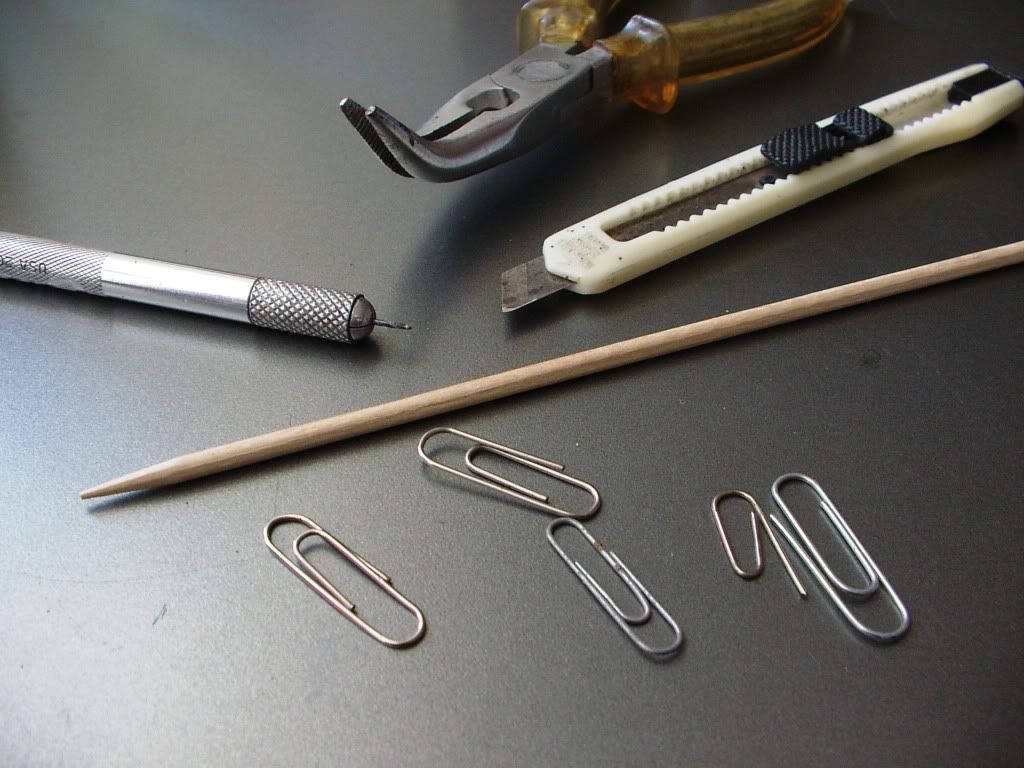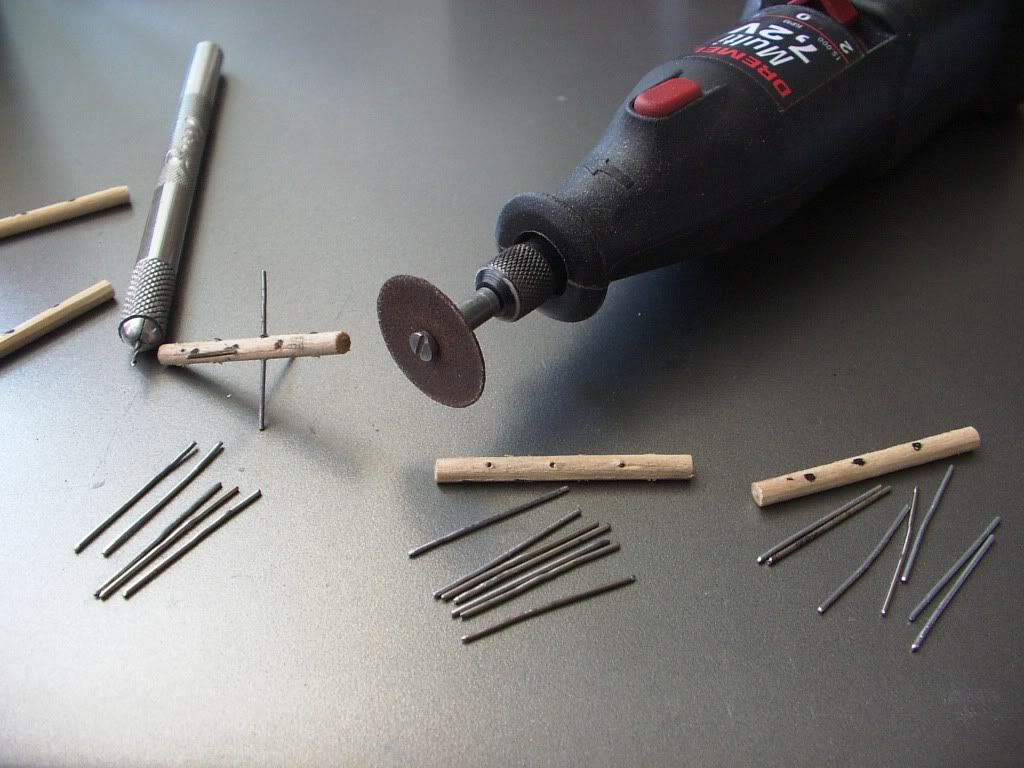The Early Restauration Portuguese list (FoGR «Wars of Religion», page 78 ) allows the use these portable defences - which the Portuguese used to call cavalinho de pau, «little wooden horse» -, so I roll my sleeves up and got down to business!
Material:
Small metal clips, a wooden kebab spit, X-acto, a clamp and a 1 mm drill.

First, I cut the spit in 4 cm sections. Using a pencil, I made small markings at regular intervals. These pieces will be the shafts. Then I unbent the clips with the clamp.
With a Dremel’s rotary tool equipped with a cutting disk, I picked up one unfolded clip and cut it into 2,5 cm long sections. These would be the chevaux’s shafts. Each clip made for 3 shafts. With the cutting disk, I sanded the spikes’ edges so that they would enter the holes more easily.
To make sure the holes were aligned and perpendicular, I drilled the first hole right in the centre of the shaft and then I inserted the first shaft. This served as a guide where to drill the remaining holes. After I finished drilling, I inserted the shafts into the frame and fixed them in place with glue.
The picture shows, from right to left, a cheval frame with markings, a cheval frame with holes in it and another one where I used the drilling trick that worked just fine.

The actual chevaux de frise had something like 28 spikes but I stuck to 7, which is fine for game’s sake.
After I finished my carpenter’s job, I sprayed the chevaux with surface primer and then painted them in a mix of brown hues. Another spraying with matt varnish and my little wooden horses were done!

Time spent in scratch building: 2:30h









